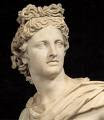The Making of the Shroud of Turin
The first thing that strikes me about the Shroud of Turin is that the face that appears in the negative image I think is not the face of a first century Jew but rather the stylized Medieval representation of a Caucasian Jesus of Nazareth.
Relics have been an important factor in Christianity ever since Helena Augusta the hen-pecking mother of the Roman Emperor Constantine (the one who legalized Christianity in 313 CE) went to Judaea looking for the true cross on which Jesus of Nazareth was crucified and came back with some wood and some thorns from the crown that he wore.
The Crusades in the 11th century opened up the (un)Holy Land and made pilgrimages there possible. I guess the trade in religious relics must have got a boost as well.
The Shroud of Turin first appeared in a church at Lirey, France in the 14th century. In the 15th century it became a possession of the House of Savoy and ended up finally in Turin, Italy.
In Medieval times the life of peasants was cheap.
A counterfeiter who wanted to create the ultimate relic, the burial cloth of Jesus of Nazareth - the Savior of Christianity, all he had to do was to get a peasant (possibly one already condemned to death for not having paid the debt owed to him) crucify him in the same manner as described in the Gospels (by then readily available) and inflict before hand the same wounds also eloquently narrated in the New Testament (crown of thorns, flagellation, etc..).
After the execution was done, wrap the body in a linen cloth to be placed in a container where it would be totally covered with sand, salt and/or other drying materials housing all in a drying room.
After a suitable length of time, the linen cloth would be retrieved and the dead body (mercifully) buried for good.
A new but true sudarium of Jesus of Nazareth is now ready for purchase by true believers.
BTW. Why so few shrouds are around? Because acquiring peasants for crucifixion got a tad tough as time went on.
Relics have been an important factor in Christianity ever since Helena Augusta the hen-pecking mother of the Roman Emperor Constantine (the one who legalized Christianity in 313 CE) went to Judaea looking for the true cross on which Jesus of Nazareth was crucified and came back with some wood and some thorns from the crown that he wore.
The Crusades in the 11th century opened up the (un)Holy Land and made pilgrimages there possible. I guess the trade in religious relics must have got a boost as well.
The Shroud of Turin first appeared in a church at Lirey, France in the 14th century. In the 15th century it became a possession of the House of Savoy and ended up finally in Turin, Italy.
How to produce on a linen cloth the image of a man who appears to have been physically traumatized in a manner consistent with crucifixion without using dyes, paint, pigment or a photographic process?
In Medieval times the life of peasants was cheap.
A counterfeiter who wanted to create the ultimate relic, the burial cloth of Jesus of Nazareth - the Savior of Christianity, all he had to do was to get a peasant (possibly one already condemned to death for not having paid the debt owed to him) crucify him in the same manner as described in the Gospels (by then readily available) and inflict before hand the same wounds also eloquently narrated in the New Testament (crown of thorns, flagellation, etc..).
After the execution was done, wrap the body in a linen cloth to be placed in a container where it would be totally covered with sand, salt and/or other drying materials housing all in a drying room.
After a suitable length of time, the linen cloth would be retrieved and the dead body (mercifully) buried for good.
A new but true sudarium of Jesus of Nazareth is now ready for purchase by true believers.
BTW. Why so few shrouds are around? Because acquiring peasants for crucifixion got a tad tough as time went on.


0 Comments:
Post a Comment
<< Home